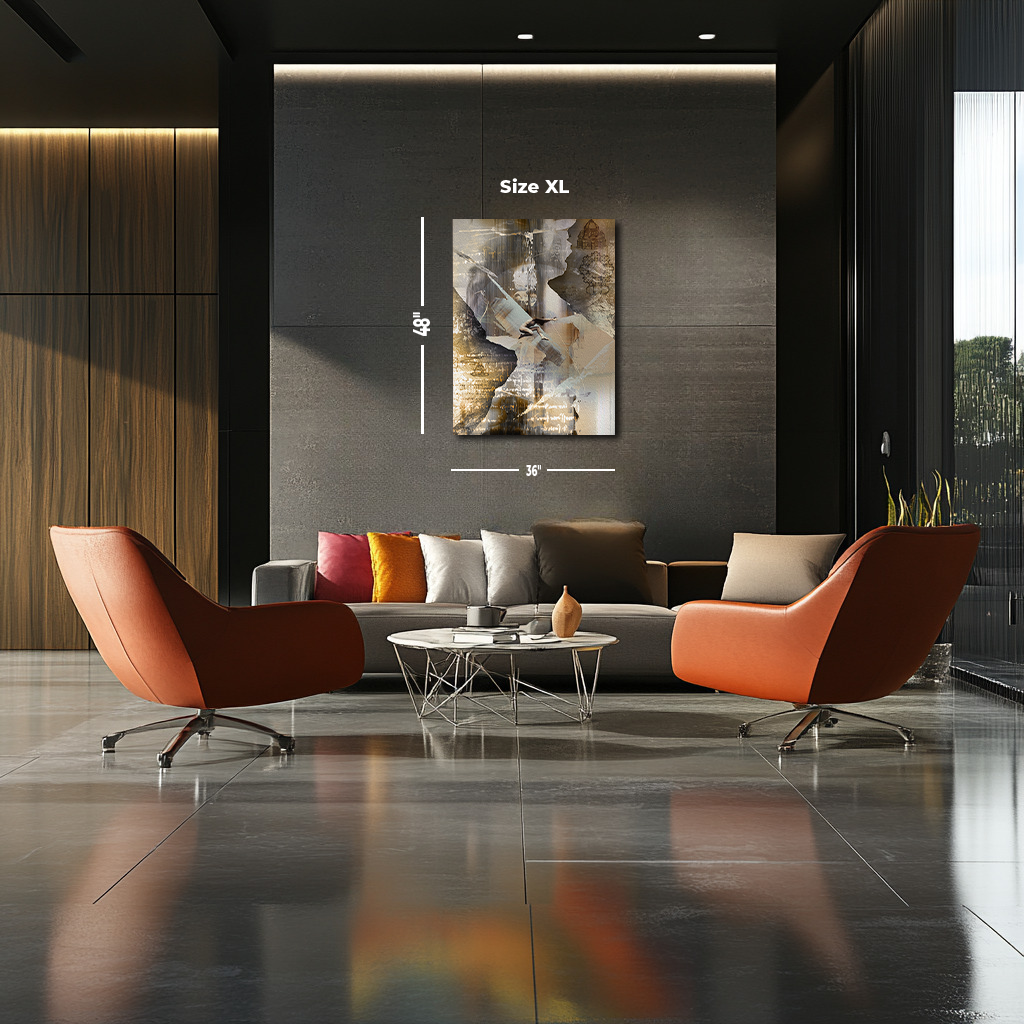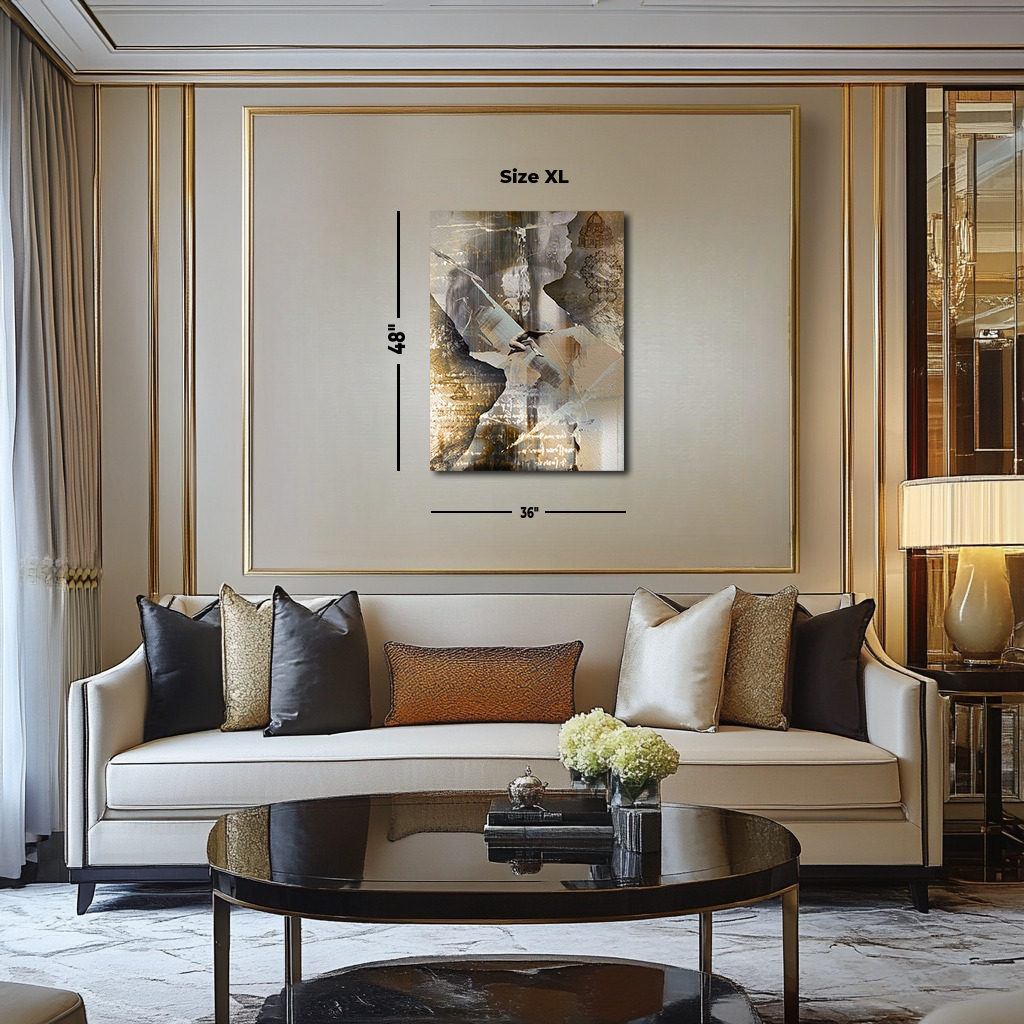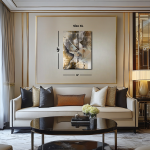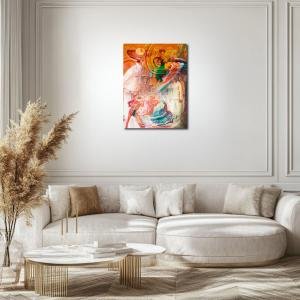Interwoven Legacies: The Codex Urbinas Reimagined
"Interwoven Legacies: The Codex Urbinas Reimagined" pays tribute to Leonardo da Vinci’s masterful exploration of anatomy, light, and proportion in his Codex Urbinas . This conceptual piece integrates his sketches, mirrored text, and botanical studies with surreal elements like a suspended figure and abstract architectural motifs. Golden and bronze hues symbolize enlightenment, while muted greys convey introspection. The fragmented, layered background reflects the evolution of knowledge and humanity's perpetual quest for understanding. This artwork bridges Renaissance ideals and modern reflections, celebrating Leonardo’s enduring legacy as an artist, scientist, and philosopher.
Please see Below for Details…
Hotline Order:
Mon - Fri: 07AM - 06PM
404-872-4663
The Codex Urbinas , one of Leonardo da Vinci’s profound legacies, held at the Vatican Library, encapsulates his treatises on painting. A visionary exploration of form, light, and anatomy, this codex is Leonardo's attempt to codify his discoveries for future generations. This conceptual reinterpretation marries his analytical genius with surreal elements, transforming his teachings into a layered visual narrative of timeless significance.
At the core of this artwork is a figure suspended in motion, simultaneously delicate and powerful, embodying Leonardo’s fascination with the human body as both a machine and a vessel of expression. The figure’s posture, with an extended hand, suggests an act of reaching—symbolic of humanity's unending quest for knowledge. Surrounding this figure are faint architectural sketches, including domes and geometric structures, evoking Leonardo’s work on perspective and his architectural pursuits.
The composition’s interplay of light and shadow recalls Leonardo’s chiaroscuro technique, an essential aspect of his artistry. The left side is dominated by darker hues, rich in texture and mystery, while the right side brightens into golden and soft neutral tones, creating a visual gradient that mirrors the artist’s philosophical belief in the duality of light and darkness. Faint script from the Codex Urbinas , written in Leonardo's characteristic mirrored handwriting, weaves through the scene, linking the figure to his written legacy. These elements are a nod to Leonardo’s integration of science, art, and philosophy.
Leonardo’s botanical studies also find representation here. The abstract floral forms along the edges symbolize nature’s inherent design and Leonardo’s belief in its fundamental connection to art. These organic shapes contrast with the precision of the geometric overlays, reflecting Leonardo's dichotomy between the organic and the constructed.
The color palette is deeply symbolic. The gold and bronze hues, reminiscent of illuminated manuscripts, convey timelessness and the pursuit of enlightenment. The muted greys and blacks ground the piece, providing an air of introspection. These tones together bridge the divide between Leonardo’s time and the modern era, suggesting that his ideas remain relevant and inspiring.
As an artist, I found inspiration in Leonardo's ability to connect the human and the divine through his works. His explorations of anatomy and perspective were not merely technical exercises but meditations on existence. The figure in this composition represents my interpretation of Leonardo’s ceaseless curiosity and humanity’s shared journey of discovery. The fragmented and layered background symbolizes the complex legacy of knowledge—pieces of understanding built upon by generations.
The faint outline of a ship in the lower left corner draws upon Leonardo’s fascination with fluid dynamics and his observation of water as a life force. The inclusion of water motifs also serves as a metaphor for time and the passage of ideas, seamlessly flowing yet always evolving. The presence of architectural domes in the upper right, potentially referencing St. Peter’s Basilica, links Leonardo’s scientific studies to his deep spiritual reflections.
The artwork is more than a homage; it is a dialogue between Leonardo's Renaissance ideals and our contemporary age. His visionary insights, such as his dissections of the human body or his principles of perspective, laid the groundwork for countless disciplines. This reinterpretation seeks to honor that legacy by embedding his ideas into a timeless, dreamlike narrative.
Leonardo’s Codex Urbinas is a treasure not just for its content but for its intention—to share knowledge and inspire. His meticulously detailed studies of anatomy, light, and proportion were foundational to both art and science. By reimagining his work within a conceptual framework, this piece invites viewers to consider how past knowledge shapes the present and future.
The surreal and fragmented nature of this composition also reflects the inherent complexity of human understanding. Just as Leonardo wove together disciplines, this artwork blends mediums, themes, and timelines. The transparent layers, juxtaposed elements, and interplay of organic and mechanical forms reflect the interconnectedness of all knowledge.
This piece is special because it captures the essence of Leonardo's polymathic spirit while exploring modern questions about knowledge, legacy, and innovation. It is a testament to how one man’s insatiable curiosity continues to inspire and guide. Leonardo once said, "Art is never finished, only abandoned," and this artwork embodies that sentiment, a constantly evolving dialogue between the past and the future.
Add your review
Your email address will not be published. Required fields are marked *
Please login to write review!
Looks like there are no reviews yet.










